I am working on a project to turn a play-through of the original Pokémon Red (first released in North America in September 1998) into a serialized strategy guide/novel here at The New Leaf Journal (my project is inspired by a real 1999 strategy guide/novel covering Pokémon Red, which I previously reviewed in these pages). In order to write my guide, I have to actually play through the game and record my play-through (recording is necessary so I can review what I did and collect screenshots for my articles). I started and abandoned two play-throughs before my current one (see note on one), primarily because I felt like they lacked the direction I was looking for to turn them into an interesting story. I expect that my current, on-going run will be the one that becomes our novel. One thing I am doing to give my current play-through direction is trying to catch all new Pokémon in each area I visit. Firstly, this seems like a good task for the strategy guide half of my project since prospective players would want to know about all available Pokémon in the game. Secondly, this can also contribute to my making a narrative out of the game. The original Pokémon games were released in two versions (originally Red and Green in Japan, followed by a slightly improved Blue; and Red and Blue in the United States; Pokémon Yellow was a slightly tweaked version of the original Red/Green/Blue with some story and structural differences), and one feature of this set-up was that it is impossible to collect all Pokémon on a single cartridge without trading. Thus, my goal is not to complete the in-game Pokédex, but to show players what is possible playing with a single cartridge or save file without trading with someone who has a different version or cheating.
The original Pokémon games do not have any extraordinarily rare Pokémon. With the exception of a special area called the Safari Zone (which I discussed in the context of Pokémon Yellow in an article which indirectly explains why I am making an exception to my catch ’em all rule for the Safari Zone), the rarest wild Pokémon in a given area tend to appear in 5% of encounters. 5% is not great, but not the worst. Subsequent Pokémon games tend to have even less common encounters and other twists such as Pokémon that only appear in events or at certain times of day.
However, low encounter rates call upon luck. Sometimes the odds work out like they are supposed to or you get even better than average luck would indicate. Other times – not so much. I will tell you the story of one such not-so-much case.
Let us begin with some context. The player character begins the generation 1 Pokémon games in his house in Pallet Town.
(Note: “Generation 1” for this article is limited to Pokémon Red and Blue, not Yellow – and certainly not later remakes of the generation 1 games. Moreover, I am playing Red – but I will discuss the differences between Red and Blue since they are relevant to this article.)
After obtaining his first Pokémon and completing a fetch quest for Professor Oak, the player can finally start catching Pokémon. Pokémon appear in grassy areas – which are clearly distinct from the rest of the map. (They also appear in caves, certain buildings, and water – but for the small slice of the game we are looking at, they only appear in outdoor grassy areas.) The first two Pokémon available on Route 1, which connects Pallet Town to Viridian City, are Pidgey and Ratatta – both of which have 50% encounter rates.
Viridian City connects to Route 2 (North) and Route 22 (West). On Route 2, the player has his or her first opportunity to catch a bug Pokémon – with Weedle appearing at a 15% clip in Red and Caterpie appearing at a 15% clip in Blue (Pidgey and Rattata combine to appear 85% of the time on Route 2 in both versions). File this away because it will be significant once we get to the meat of this article.
Route 22 presents the first challenging encounters. Rattata appears 45% of the time in both Red and Blue (surely players are beginning to tire of Rattata). Pidgey avoids Route 22 for some reason – perhaps because another Normal/Flying-type bird, Spearow, appears at 10% in both versions. But we have a significant difference in Red and Blue. In Pokémon Red, Nidoran♂ appears 40% of the time while Nidoran♀ appears 5% of the time. Blue reverses the percentages, with Nidoran♀ appearing 40% of the time and Nidoran♂ appearing 5% of the time. A first-time player may miss that both Nidos are available regardless of version. Although there is an in-game trade with an NPC character where the player can swap a Nidoran♂ for Nidoran♀ fairly early in the game (this in-game trade obviously favors Red over Blue since Blue players are much more likely to have already caught Nidoran♀), I decided to hunker down and catch both. Unsurprisingly, I caught Nidoran♂ and Spearow well before finding Nidoran♀, but I think it only took me about 15 minutes (playing at real time speed) to encounter and catch a Nidoran♀ when I put my mind to it.
The next in-game location is Viridian Forest. Route 2 is is cut in two by Viridian Forest – the player enters the Forest from the Viridian City side of Route 2 and exits on the Pewter City side. Viridian Forest is an important location in that this is where the player is guaranteed to have his or her first battle against an opponent other than the rival character – with three bug catcher trainers occupying the Forest and one being a mandatory battle close to the exit. Getting through the Forest will bring the player to Pewter City and his or her first of eight gym battles (after traveling the map and clearling all 8 gyms, the player character must return to Route 22 and make his way to the final battles at the Indigo Plateau). But our journey in this article will end in the Forest.
Viridian Forest features the same five Pokémon in the Red and Blue versions. However, while the identities of the five Pokémon are the same, the encounter rates are version dependent. See below:
| Pokémon | Red Rate | Blue Rate |
|---|---|---|
| Caterpie | 5% | 45% |
| Metapod | 5% | 40% |
| Weedle | 45% | 5% |
| Kakuna | 40% | 5% |
| Pikachu | 5% | 5% |
In Red version, which is what I am playing, Weedle, a poison/bug insect Pokémon, and its evolution, Kakuna, combine to appear 85% of the time. Their early game bug counterparts, Caterpie and its evolution Metapod, combine to appear only 10% of the time. As you can see, Blue mirrors these odds, with Caterpie and Metapod being common and Weedle and Kakuna being relatively rare. Pikachu can only be caught in Red and Blue in Viridian Forest and it has a 5% encounter rate in both games.
(In Pokémon Yellow, Weedle, Kakuna, and Pikachu are unavailable in Viridian Forest. Caterpie and Metapod combine to have a 75% encounter rate, with Pidgey appearing 24% of the time. This of course adds up to 99%. Lucky players may encounter Pidgey’s evolution, Pidgeotto, which appears just 1% of the time. You would think that I was happy to not have to try to catch Pidgeotto in Yellow, but as bad luck would have it – Pidgeotto and its 1% encounter rate may have been better than what I ended up with.)
I had already caught a Weedle on route 2 and planned to evolve it into Kakuna before my first gym battle, so I did not need to catch a Weedle or Kakuna in the Forest. However, I did need to catch – at a minimum – Caterpie and Pikachu. In theory, I could bypass Metapod if I caught Caterpie since Caterpie is easy to evolve into Metapod (Caterpie is available from levels 3-5 and evolves at level 7), but I figured I would end up catching both. While Pikachu, Caterpie, and Metapod are rare – a 5% encounter rate is not too bad. I could expect to find each 1 out of every 20 encounters. Surely I would not spend about an hour wandering the Forest.
Spoiler: Not so surely.
(Note: Before continuing, I will explain my methodology. I have been recording my Pokémon Red game-play so that I can use the recordings as references for my strategy guides and clip screenshots from them. My Viridian Forest trip ended up being much longer than I would have liked, so I had quite a bit of footage. I skipped through it and tried to count all of my encounters. My list should almost exactly perfect but it is possible I missed a small number of encounters while skipping through the video. I will eventually upload the footage so readers with too much time to kill will be able to check my work.)
Things got off to a predictable start, but I finally found something interesting on my 13th encounter:
1. Kakuna; 2. Kakuna; 3. Weedle; 4. Weedle; 5. Weedle; 6. Kakuna; 7. Kakuna; 8. Kakuna; 9. Weedle; 10. Weedle; 11. Weedle; 12. Weedle 13. METAPOD…
Of course the first rare Pokémon I encountered was the least useful – Metapod. I again describe it as least useful because had I encountered a Caterpie, I could have caught it and evolved it into a Metapod. But Metapod cannot devolve into Caterpie and the Pokémon breeding mechanic was first introduced in the generation two games, so the only way to add Caterpie to the Pokédex in generation 1 is to actually catch a Caterpie. But I did catch the Metapod – and by this point I had evolved the Weedle I caught on Route 2 into a Kakuna. So my early Pokédex was just missing a Caterpie and Pikachu. But I got Metapod on 13 tries, so at this rate perhaps the other two would appear by encounter 39?
Three encounters later, it became clear that I had perhaps been unduly pessimistic!
14. Weedle; 15. Kakuna; 16. PIKACHU…
Pikachu appeared on encounter 16. I caught it, so now I would be free to proceed with the game once I caught a Caterpie. I was optimistic. I briefly left the Forest to heal, figuring I could train some of my lower-level Pokémon, namely my newly-caught Pikachu, in what I hoped would be the short time it would take me to find a Caterpie.
17. Weedle; 18. Weedle; 19. Weedle; 20. PIKACHU; 21. Kakuna; 22. Weedle; 23. Weedle; 24. Weedle; 25. Weedle; 26. Kakuna; 27. Kakuna; 28. Weedle; 29. Kakuna; 30. Weedle; 31. Kakuna; 32. Kakuna; 33. Kakuna; 34. Kakuna; 35. Weedle; 36. Kakuna; 37. Kakuna; 38. Kakuna; 39. Weedle; 40. Weedle; 41. Kakuna; 42. Weedle; 43. Kakuna; 44. Weedle; 45. PIKACHU; 46. Weedle; 47. Weedle; 48. Weedle; 49. Kakuna; 50. Weedle; 51. Kakuna; 52. PIKACHU; 53. Kakuna; 54. Kakuna; 55. Weedle; 56. Weedle; 57. Kakuna; 58. Kakuna; 59. Weedle; 60. Weedle; 61. Weedle; 62. Kakuna; 63. Weedle; 64. Weedle; 65. Weedle; 66. Weedle; 67. Kakuna; 68. Kakuna…
68 encounters. 0 Caterpie. Four Pikachu encounters out of 68 is decent, but only a single Metapod. 63/68 encounters were Weedles and Kakunas, which is about 92.6% instead of the expected 85.0%.
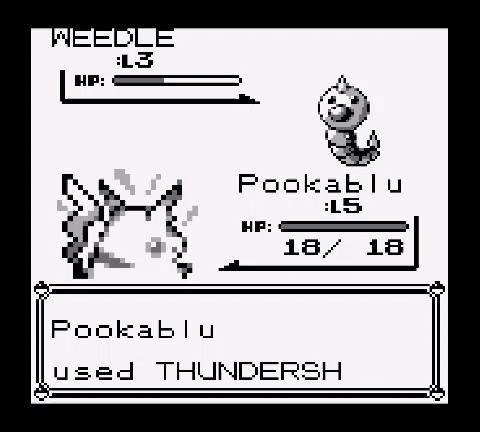
My bad Caterpie luck was past the point of being annoying. Moreover, I did not have too much to do in Viridian Forest. I was working on leveling up my newly-caught Pikachu as well as my Kakuna and an additional Pokémon, but by this point I was ready to move on from the Forest. There was also a limit to how much leveling up I wanted to do since I am playing with a self-imposed rule that I cannot use Pokémon at a higher level than the next gym leader’s best Pokémon. Here, I decided to save my game and footage and start recording a new session – lest I lost any incredible video of my character’s wandering around Viridian Forest. I also took a moment to contemplate how I would turn wandering around a Forest looking for a caterpillar into compelling fiction.
I then resumed. Let us see my encounters through 100.
69. Weedle; 70. Kakuna; 71. Kakuna; 72. Weedle; 73. Weedle; 74. Weedle; 75. Weedle; 76. Kakuna; 77. Weedle; 78. Weedle; 79. Weedle; 80. Weedle; 81. Kakuna; 82. Weedle; 83. METAPOD; 84. Kakuna; 85. Weedle; 86. Kakuna; 87. METAPOD; 88. Kakuna; 89. PIKACHU; 90. METAPOD; 91. PIKACHU; 92. Weedle; 93. PIKACHU; 94. Weedle; 95. Weedle; 96. Weedle; 97. Kakuna; 98. Kakuna; 99. Weedle; 100. PIKACHU…
As you can see, I did not find any Caterpie through encounter 100. But note my stretch from encounter 83, where I saw my second Metapod, through 93. In those 11 encounters, I saw three Metapod and three Pikachu – six of 11 encounters with two Pokémon that combined for a 10% encounter rate. What luck! Remarkably however, still no Caterpie. Through 100 encounters, one would expect to see 5 Caterpies, 5 Metapods, and 5 Pikachus. I had 0 Caterpies, 4 Metapods, and 8 Pikachus. The only thing that was notably off from expected was, sadly, Caterpie.
I had come too far by this point, so let us see how long it would take for me to find a Caterpie…
101. PIKACHU; 102. PIKACHU; 103. METAPOD…
Alright come on. This has to be some kind of joke now. I had four (noting Pikachu as encounter 100) consecutive encounters with two Pokémon that each appear 5% of the time. But the third Pokémon that appears 5% of the time, Caterpie, had yet to make an appearance in 103 encounters. What a pain.
104. Kakuna; 105. Weedle; 106. Kakuna; 107. Weedle; 108. Kakuna; 109. Weedle; 110. Weedle; 111. Weedle; 112. Weedle; 113. Kakuna; 114. Weedle; 115. Weedle; 116. Weedle; 117. Weedle; 118. CATERPIE!!!
Finally…
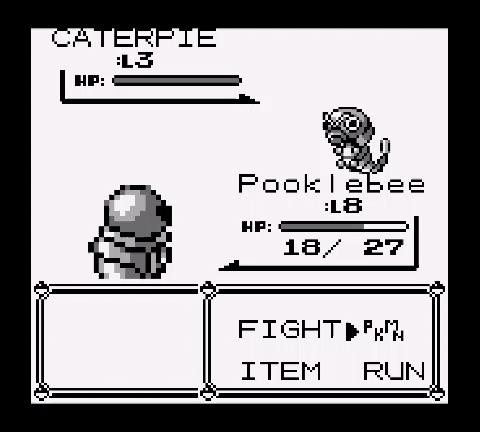
After my very bizarre run of luck from encounters 83 through 103, things returned to form with nothing but Weedles and Kakunas from 104-117. Then, finally, on encounter 118 (again, I note it may have been slightly worse…), I finally encountered a Caterpie. While one can catch a Caterpie by doing nothing but chucking Pokéballs, I decided to leave nothing to chance.
I caught Caterpie without any difficulty.
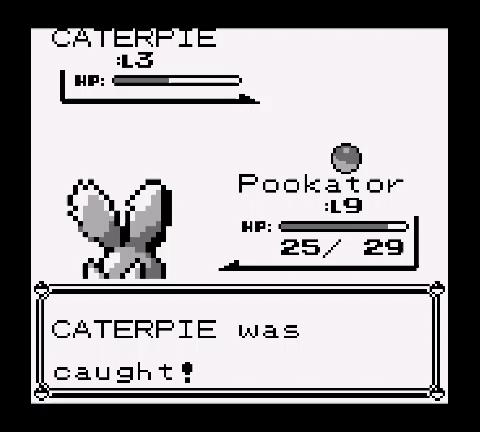
My work was finally done. I could leave the Forest once and for all. Well, before that I had to nickname Caterpie. Fortunately, I had a name in mind.
After naming Caterpie “Kagerou” in honor of a certain visual novel I reviewed in these pages, I left the forest, encountering one last Weedle for the road.
Now let us see my encounter statistics for this terrible Viridian Forest trip (I will count the last Weedle I saw on the way out of the Forest after catching Caterpie).
| Pokémon | Encounters | My % | Expected % |
|---|---|---|---|
| Weedle | 62/119 | 52% | (53-54) 45% |
| Kakuna | 41/119 | 34% | (47-48) 40% |
| Caterpie | 1/119 | >1% | (6) 5% |
| Metapod | 5/119 | 4% | (6) 5% |
| Pikachu | 10/119 | 8% | (6) 5% |
I did not include any decimals because the in-game Pokémon odds do not, so taking my rounded percents together comes up just short of 100%. As you can see, I ran into more Weedles and fewer Kakunas than expected, but together they combined for 86% of my encounters, just slightly more than the expected 85%. Thus, my issue was not that I was finding more Weedles and Kakunas than expected, but instead that Caterpie was strangely reluctant to appear in the rest of the encounters. The odds suggested that I should have seen 6 Caterpies, Metapods, and Pikachus. Instead, I encountered four excess Pikachus and just one Metapod less than expected, but five fewer Caterpies.
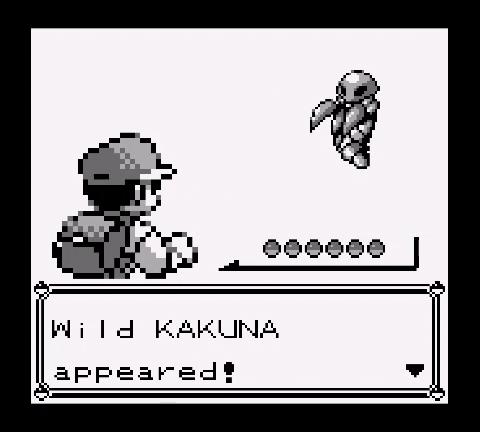
In the run I abandoned right before this one, I remember catching a Metapod naturally on my first run through the Forest (without specifically trying for it). I returned to the Forest later for Caterpie and Pikachu because I was trying to acquire 30 Pokémon in order to obtain a specific item. I recall it only took me about 25 encounters to find and catch both of them – that is, about what one would expect from the in-game odds.
So what happened here?
In the end – I think I just had bad luck with Caterpie on this run. I kept rolling a 20-sided dice and it took 118 tries to get the number I was looking for. The generation 1 Pokémon games are notoriously buggy (pun intended since Viridian Forest is full of bugs) and I know it is possible to manipulate encounters with different step patterns – although I am not familiar with how to do it in practice. But to guard against the mere possibility, I wandered around at random and through different patches of grass – so I suspect that I did not inadvertently scare the Caterpies off.
My extended Viridian Forest stay turned out to be a memorably irritating video game experience – one that I have fortunately not repeated in my Pokémon Red run thus far. Having previously written about a long project to catch a very elusive Dragonair in the Pokémon Yellow Safari Zone, I can confirm that this Caterpie excursion was far worse. I had more to entertain myself within the Safari Zone and I undertook that task solely because I wanted to. In this case, catching Caterpie was part of an actual project I am doing and, past a point, I had nothing much worth doing in Viridian Forest other than catching a Caterpie so I would not have to return to do it later.
Part of what inspired me to share this story is that I have written a good number of words about Midsummer Haze, an obscure localization of an obscure mid-2000s freeware Japanese visual novel with a strange requirement that the player must do one of the initially two available endings over and over until the third ending appears by random chance. When I first played through the novel – it took me 43 tries to trigger the third ending and thus earned a place in the infamous section of my personal video game memories. The Japanese game that Midsummer Haze is a translation of, Manatsu no Kagerou, inspired my name for the Caterpie I struggled to catch. Was the Caterpie hunt worse than my first attempt to play through Midsummer Haze so I could give the novel very late free publicity?
No. Fortunately no. It was not. I content myself with the knowledge that things can always be more painful.
You can consider my Caterpie story a little preview of my upcoming novel project, which I expect to begin in the near future. You can follow the below link to the project archive page to see how it is developing.
(Note: I will replace this note with a link to our series collection post once I begin publishing chapters.)
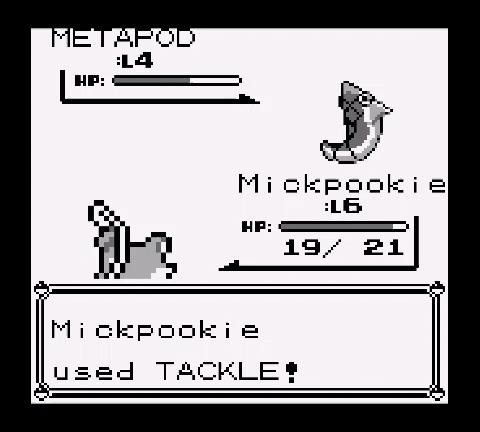
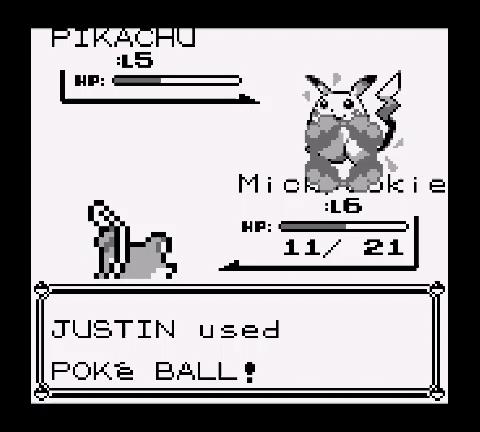
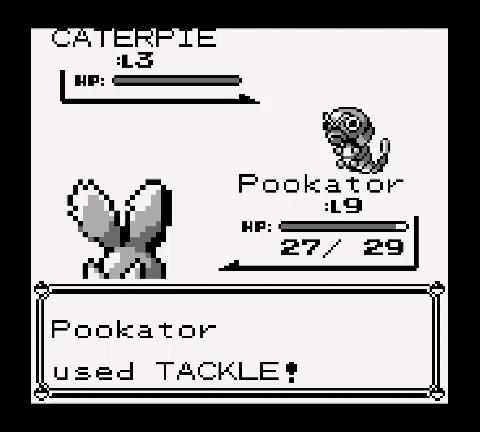
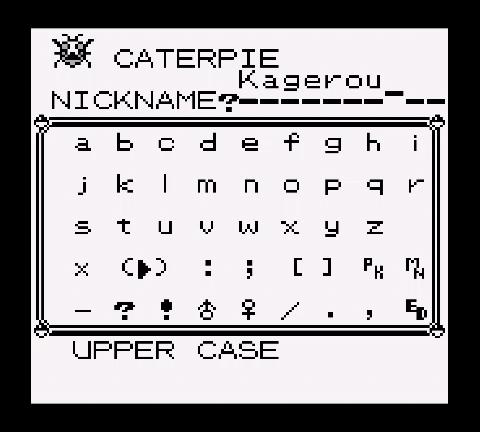
This is of course the second generation 1 Pokémon horror story I turned into an article. But at least I (sort of) knew what I was getting into when I tried to catch a Safari Zone Dragonair in Pokémon Yellow… not to mention I had other in-game things to do while undertaking that unnecessary task.
https://thenewleafjournal.com/dragonair-safari-in-pokemon-yellow/
#PokémonYellow #GameBoy
gameboy
pokemonyellow